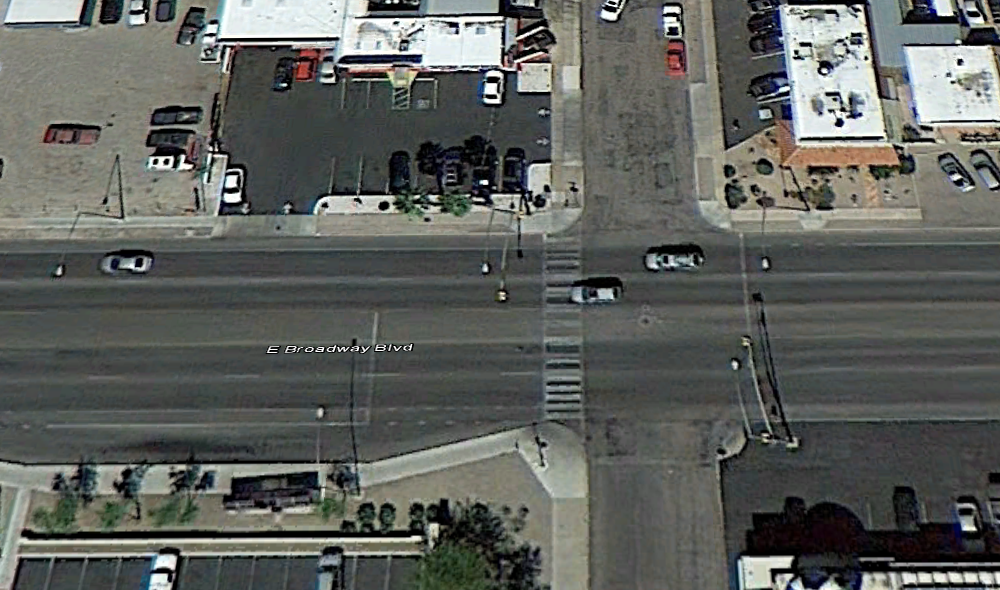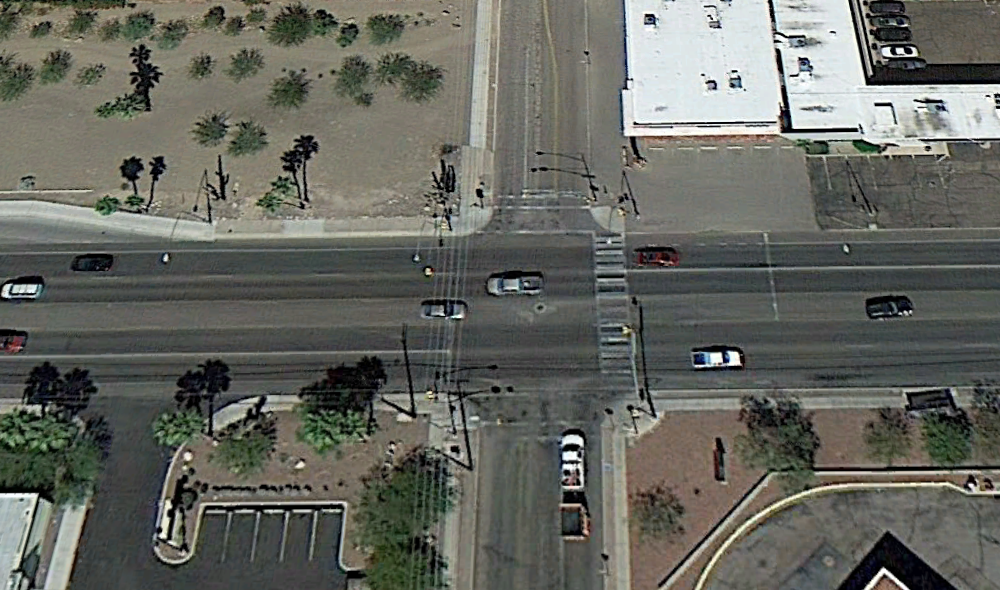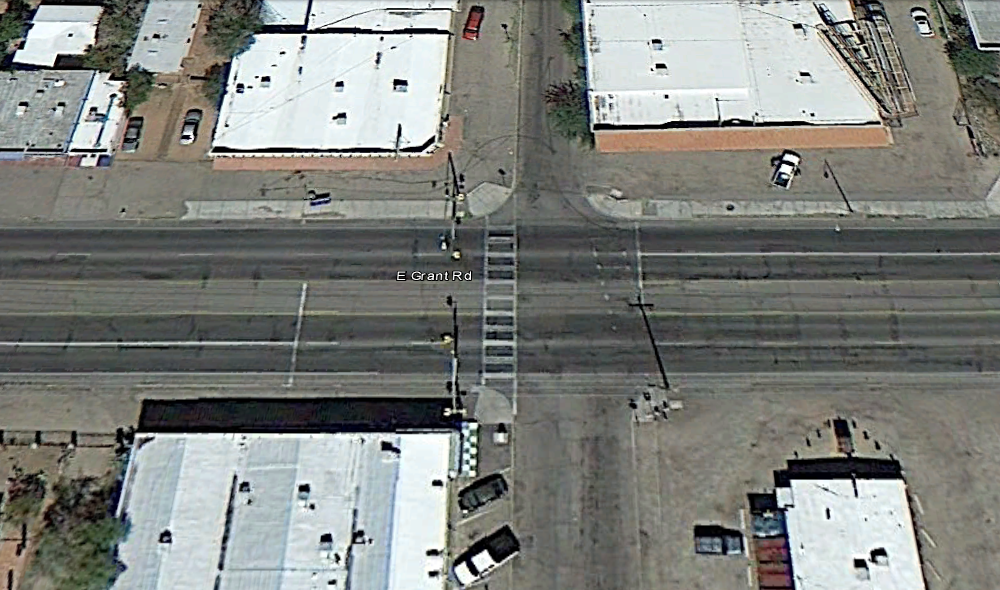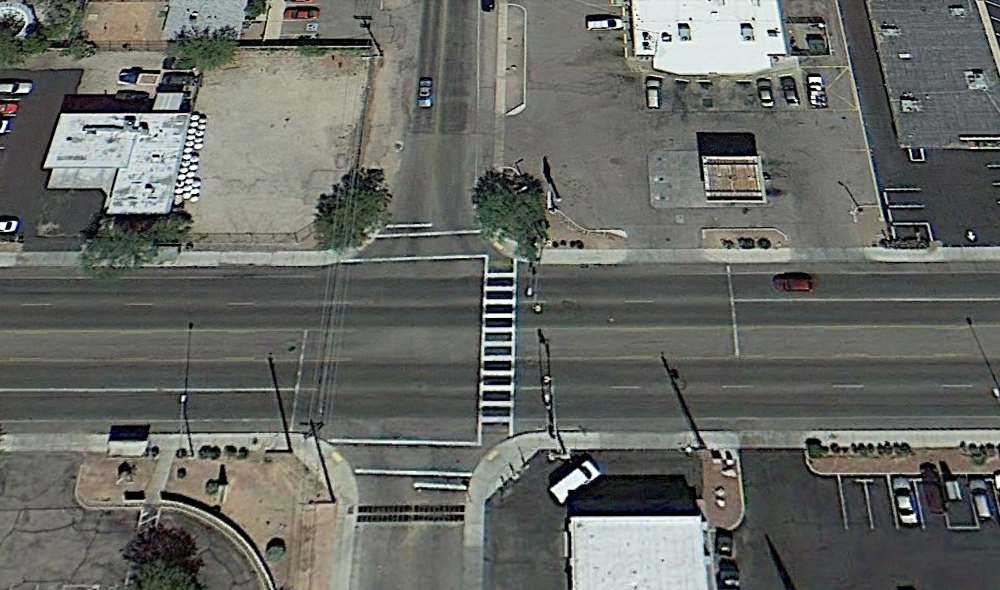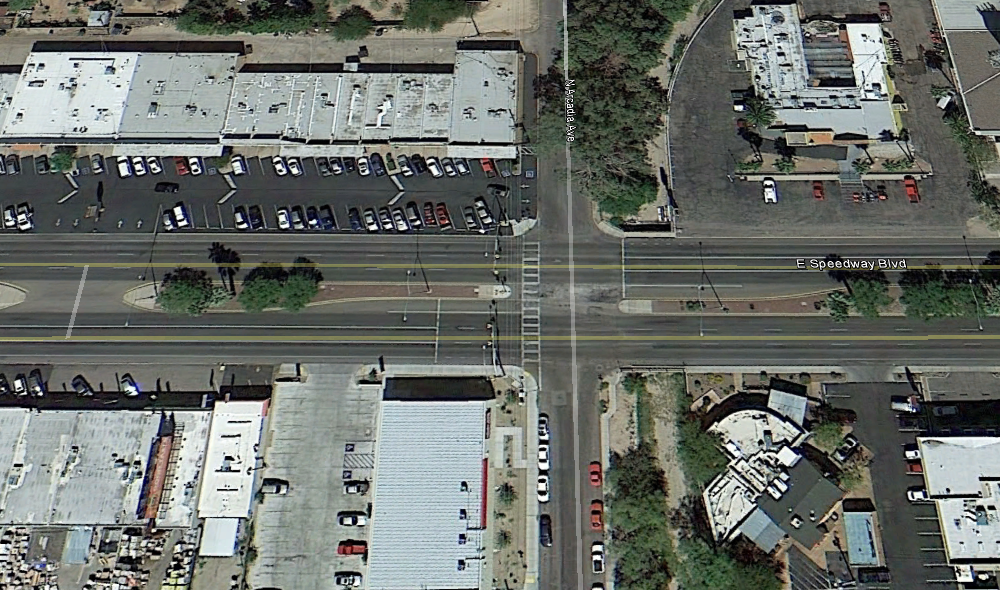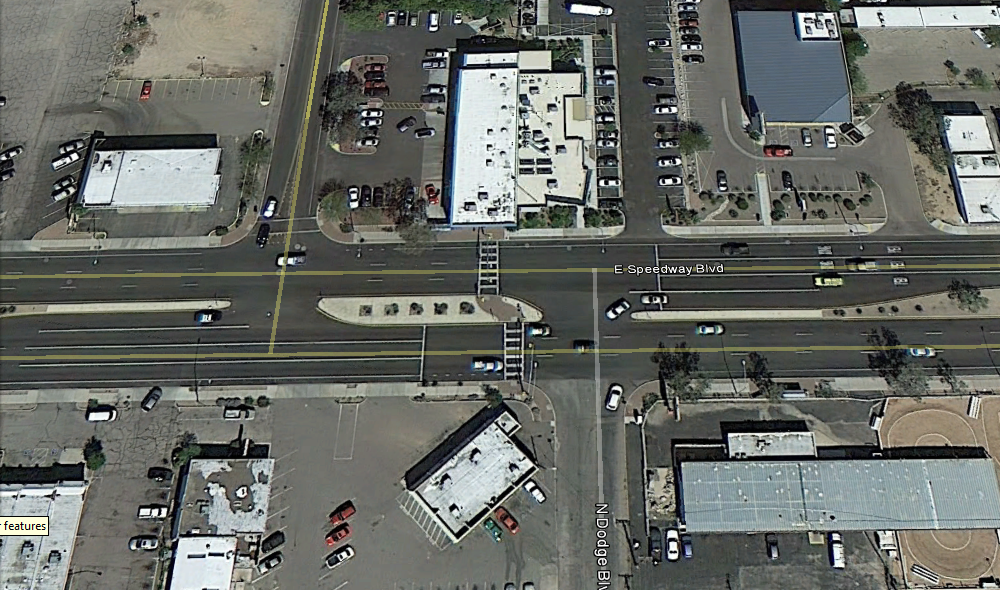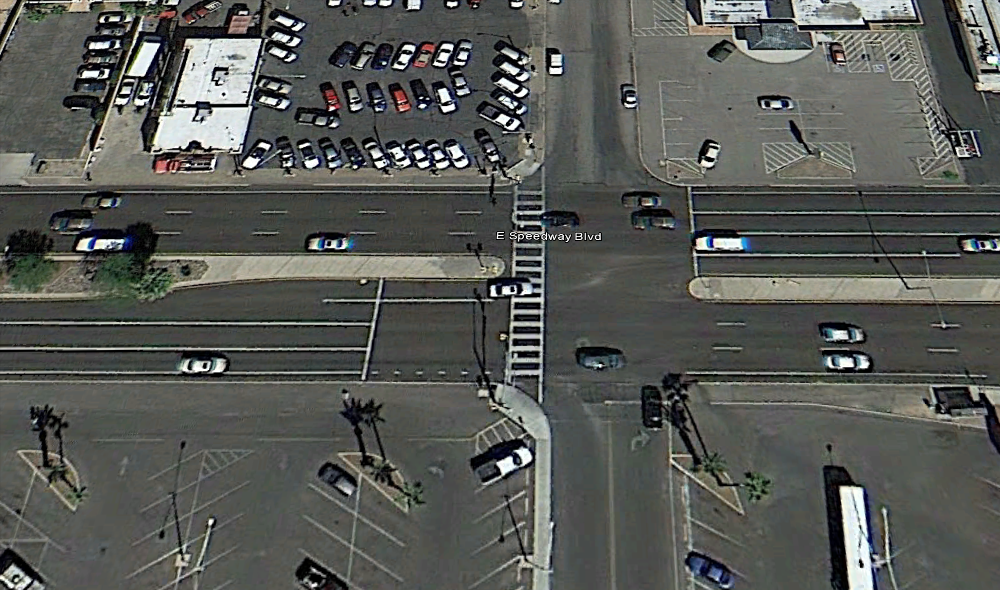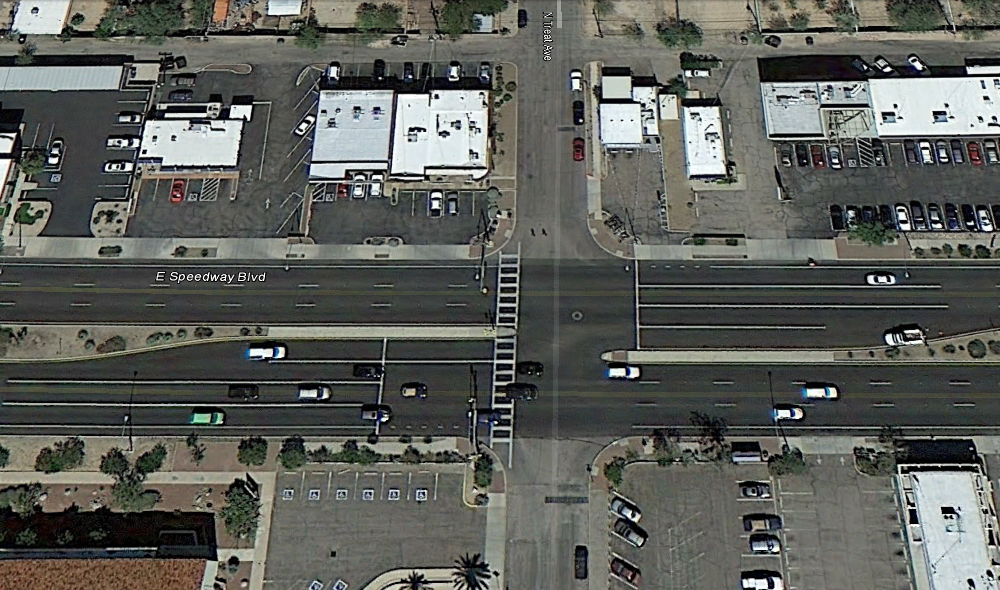June 2014 Updates - Why is the City of Tucson Sending Pedestrians to Their Doom? - Part III
/In the first two parts of this series, Southern Arizona Public Works exposed the City of Tucson's casual approach to pedestrian safety by highlighting poor construction and installation of marked-but-unsignalized-pedestrian crosswalks. Unfortunately, even when the City does install signalized-pedestrian crosswalks, it locates them improperly, thereby diluting their benefit to pedestrian safety.
The best illustration of the City's ineptitude in placing signalized-pedestrian crosswalks comes with a tragic backstory. In 2011, a car struck and killed 13-year-old Nicholas Celaya while the child was crossing East 22nd Street from Reid Park to a McDonald's restaurant on the south side of the street. The death prompted the City to create a new task force to make the streets safer for pedestrians. The City promptly installed a High Intensity Activated Crosswalk (HAWK) at East 22nd Street and South Randolph Parkway placed directly over the previously marked-but-unsignalized-painted crosswalk seen here or below:
Sigh. Even in attempting to correct its mistake, the City of Tucson built the new HAWK in the wrong location, further exposing pedestrians to danger. HAWKs should not be a substitute for street lights, and therefore the City should never place them directly adjacent to an intersection like the one at East 22nd Street and South Randolph Parkway. The Manual on Uniform Traffic Control Devices (MUTCD) makes this clear:
“When an engineering study finds that installation of a pedestrian hybrid beacon is justified, then:
The pedestrian hybrid beacon should be installed at least 100 feet from side streets or driveways that are controlled by STOP or YIELD signs.”
Where should the City have placed the HAWK? Traffic coming north on South Randolph Way has a stop sign at East 22nd Street, therefore the HAWK at the location is placed improperly. This illustration demonstrates:
The City of Tucson can, and should, do better. The decision to place HAWKs at previously-established-pedestrian crosswalks rather than to install the HAWKs properly under the MUTCD is most likely a financial decision. New crosswalks 100 feet before intersections would be expensive to install. Are the savings worth the safety risk? This is an issue the City always gets wrong. Click through the gallery below for many examples of HAWKs the City of Tucson has improperly placed.


